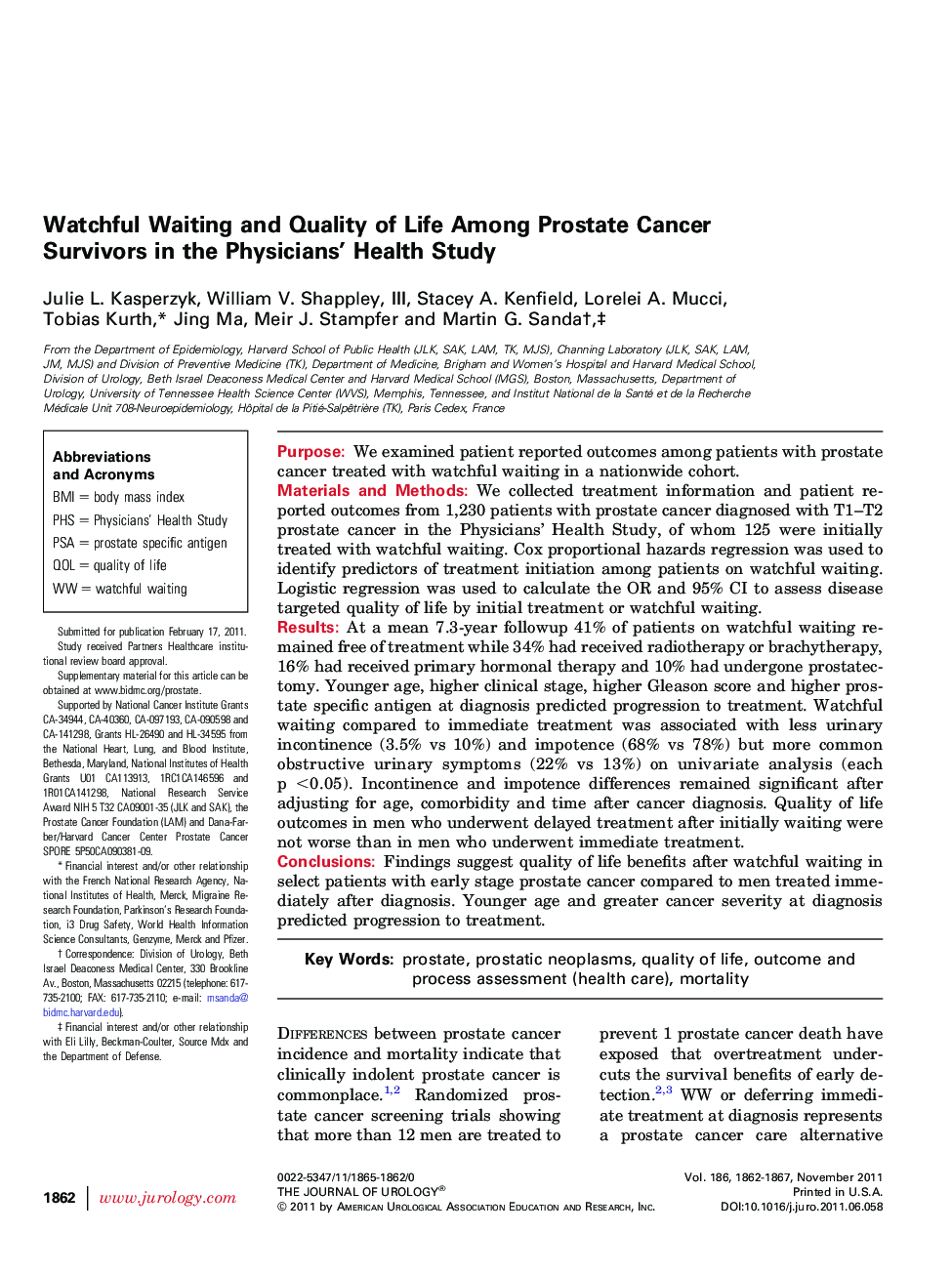| Article ID | Journal | Published Year | Pages | File Type |
|---|---|---|---|---|
| 3864398 | The Journal of Urology | 2011 | 6 Pages |
PurposeWe examined patient reported outcomes among patients with prostate cancer treated with watchful waiting in a nationwide cohort.Materials and MethodsWe collected treatment information and patient reported outcomes from 1,230 patients with prostate cancer diagnosed with T1–T2 prostate cancer in the Physicians' Health Study, of whom 125 were initially treated with watchful waiting. Cox proportional hazards regression was used to identify predictors of treatment initiation among patients on watchful waiting. Logistic regression was used to calculate the OR and 95% CI to assess disease targeted quality of life by initial treatment or watchful waiting.ResultsAt a mean 7.3-year followup 41% of patients on watchful waiting remained free of treatment while 34% had received radiotherapy or brachytherapy, 16% had received primary hormonal therapy and 10% had undergone prostatectomy. Younger age, higher clinical stage, higher Gleason score and higher prostate specific antigen at diagnosis predicted progression to treatment. Watchful waiting compared to immediate treatment was associated with less urinary incontinence (3.5% vs 10%) and impotence (68% vs 78%) but more common obstructive urinary symptoms (22% vs 13%) on univariate analysis (each p <0.05). Incontinence and impotence differences remained significant after adjusting for age, comorbidity and time after cancer diagnosis. Quality of life outcomes in men who underwent delayed treatment after initially waiting were not worse than in men who underwent immediate treatment.ConclusionsFindings suggest quality of life benefits after watchful waiting in select patients with early stage prostate cancer compared to men treated immediately after diagnosis. Younger age and greater cancer severity at diagnosis predicted progression to treatment.
